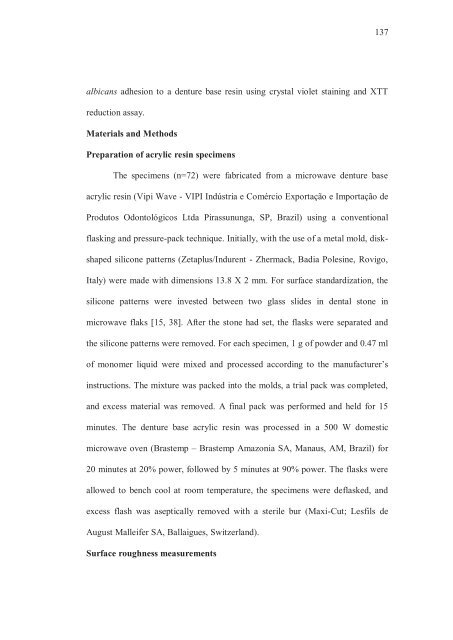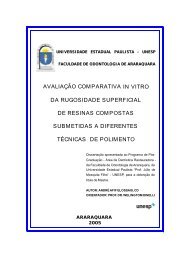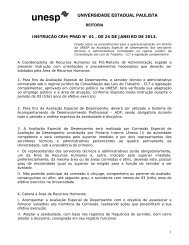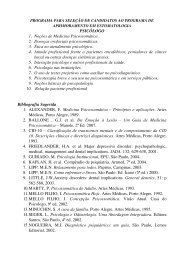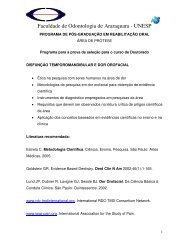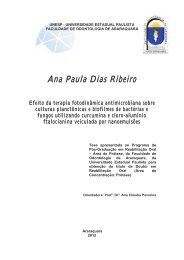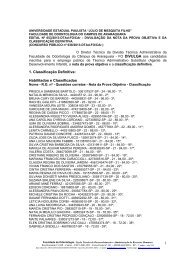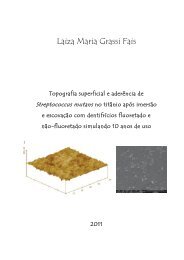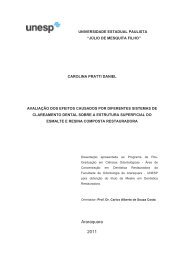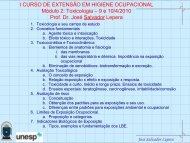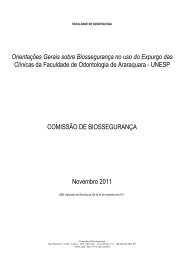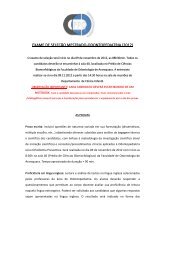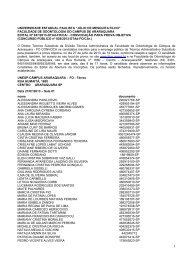universidade de são paulo - Faculdade de Odontologia - Unesp
universidade de são paulo - Faculdade de Odontologia - Unesp
universidade de são paulo - Faculdade de Odontologia - Unesp
You also want an ePaper? Increase the reach of your titles
YUMPU automatically turns print PDFs into web optimized ePapers that Google loves.
137<br />
albicans adhesion to a <strong>de</strong>nture base resin using crystal violet staining and XTT<br />
reduction assay.<br />
Materials and Methods<br />
Preparation of acrylic resin specimens<br />
The specimens (n=72) were fabricated from a microwave <strong>de</strong>nture base<br />
acrylic resin (Vipi Wave - VIPI Indústria e Comércio Exportação e Importação <strong>de</strong><br />
Produtos Odontológicos Ltda Pirassununga, SP, Brazil) using a conventional<br />
flasking and pressure-pack technique. Initially, with the use of a metal mold, diskshaped<br />
silicone patterns (Zetaplus/Indurent - Zhermack, Badia Polesine, Rovigo,<br />
Italy) were ma<strong>de</strong> with dimensions 13.8 X 2 mm. For surface standardization, the<br />
silicone patterns were invested between two glass sli<strong>de</strong>s in <strong>de</strong>ntal stone in<br />
microwave flaks [15, 38]. After the stone had set, the flasks were separated and<br />
the silicone patterns were removed. For each specimen, 1 g of pow<strong>de</strong>r and 0.47 ml<br />
of monomer liquid were mixed and processed according to the manufacturer’s<br />
instructions. The mixture was packed into the molds, a trial pack was completed,<br />
and excess material was removed. A final pack was performed and held for 15<br />
minutes. The <strong>de</strong>nture base acrylic resin was processed in a 500 W domestic<br />
microwave oven (Brastemp – Brastemp Amazonia SA, Manaus, AM, Brazil) for<br />
20 minutes at 20% power, followed by 5 minutes at 90% power. The flasks were<br />
allowed to bench cool at room temperature, the specimens were <strong>de</strong>flasked, and<br />
excess flash was aseptically removed with a sterile bur (Maxi-Cut; Lesfils <strong>de</strong><br />
August Malleifer SA, Ballaigues, Switzerland).<br />
Surface roughness measurements


